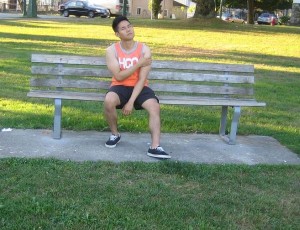The shoulder is comprised of 2 joints. Osteoarthritis involves damage to the cartilage surface and the resulting inflammation can develop in both joints. The joint where the acromion and clavicle meet is the acromioclavicular (AC) joint which contains cartilage tissue, nerves, meniscus, blood vessels and two sets of ligaments. This joint allows the individual to raise the arms above the head and commonly damaged joint in the shoulder. Any form of injury to this part of the shoulder can result to arthritis later on in life.
The glenohumeral joint is commonly referred to as the shoulder joint which is positioned where the humerus meets the scapula. This joint allows the arm to move in a circular rotation.
How does shoulder arthritis develops?
AC joint arthritis
When it comes to AC joint arthritis, the cartilage surface in between the upper shoulder becomes thin due to repeated movements. Any activity that places pressure on the joint either normal or excessive can eventually lead to arthritis.
Glenohumeral arthritis
Glenohumeral arthritis is due to the destruction of the cartilage that covers the bones in the glenohumeral joint. Once the cartilage wears out, the bones start to rub against each other. Understandably, this results to the formation of bone spurs which are bony growths that add pressure and cause wear and tear on other bones. Take note that the friction intensifies and the shoulder could no longer move comfortably or smoothly. As additional bone spurs develop, the range of movement diminishes.
What are the signs and symptoms?
AC joint arthritis
- Stiffness and pain in the front and top part of the shoulder
- Gradual onset of the symptoms
- Intensifying pain when reaching behind the back
Stiffness and pain in the front and top part of the shoulder - Tenderness of the joint
- Pain when bringing the arm across the body to touch the opposite shoulder
- Reduced range of motion
- Radiating pain up to the upper region of the neck and shoulder blade area
- Possible snapping or clicking sensation when the shoulder is moved
Glenohumeral joint arthritis
- Stiffness and pain in the affected shoulder
- Pain that disrupts sleep
- Pain that comes and goes but intensifies over the years
- Increasing pain during shoulder movement
Who are at risk?
For AC joint arthritis, it typically affects individuals over 40 years old and athletes who utilize their arms and shoulder for heavy lifting, reaching and overhead movements. Take note that weightlifters face the highest risk along with tennis players, swimmers and baseball players.
The arthritis that affects the glenohumeral joint affects individuals over 50 years old. Those who sustained a serious injury to the shoulder are prone to develop both kinds of shoulder arthritis.
Initial treatment
It is important to reduce activities and any movements that trigger the pain. The application of both cold and heat must be done at 15-20 minutes at 3-4 times throughout the day. In addition, pain medications such as naproxen, ibuprofen, acetaminophen and aspirin can be given to the individual to minimize the pain.

